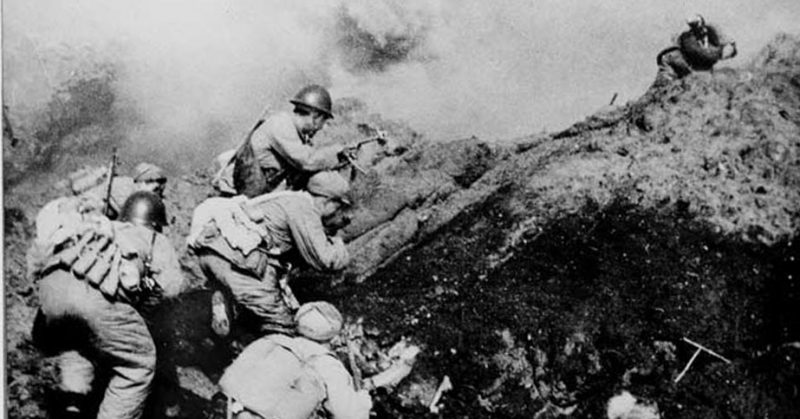In 1949, the People’s Liberation Army led by Mao was able to force the Nationalist Kuomintang (KMT) government out of mainland China. They allowed the KMT to continue holding islands in the China Sea.
In 1950, the PLA began amphibious operations which led to the capture of Hainan. An attempt to take over Kinmen was defeated by KMT tanks in the Battle of Guningtou which prevented the PLA from attacking Taiwan. At this point, the Korean War led President Truman to deploy the Seventh Fleet of the US Navy to protect Taiwan and prevent the KMT from attacking mainland China.
In 1953, Eisenhower pulled the Seventh Fleet out of the South China Sea. The KMT responded by building up troops and launching raids on the mainland. These attacks were countered with the World War II surplus equipment China had obtained from Russia. This became known as the First Taiwan Strait Crisis.
On November 14, four PLA torpedo boats attacked and sank the KMT destroyer Tai-Ping at night. Later on, Il-10 Sturmovikbombaers from the PLA Naval Air Force sank the Landing Ship (Tank) Zhongquan in Dachen Harbor. Control of the seas had shifted from the KMT to the PLA.
The PLA wanted to capture the Dachen Archipelago. The Yijangshan Islands were in the way, though. Together, the two islands are only two-thirds of a square mile, but they held over 1,000 KMT troops from the Second and Fourth Assault Groups and the Fourth Squadron, with over 100 machine gun emplacements and sixty guns in the Fourth Auxiliary Brigade.
On December 16, 1955, General Zhang Aiping convinced Beijing that he could take the islands with an amphibious assault.
On December 18 at 8:00 am, fifty-four Il-10 attack planes and Tu-2 twin-engine bombers, with eighteen La-11 fighters as escorts, bombed the KMT garrison headquarters and artillery positions. The bombardment continued for six hours, involving 184 aircraft and over 254,000 pounds of bombs. At the same time, heavy artillery and coastal guns from Toumenshan on the mainland dropped over 41,000 shells on the island.
After 2:00 pm, the amphibious assault began. 3,000 troops from the 178th Infantry Regiment and one battalion of the 180th landed in 140 landing ships and transports, escorted by four frigates, two gunboats, and six rocket artillery ships. The support ships began firing on the island. By this time, the KMT guns were quiet.
At 2:30 pm, the PLA soldiers hit the beach. A little after 3:00 pm, they had captured the strong point at Hill 93.
With their defenses overrun, the KMT troops retreated to an underground network of facilities. The final message from garrison commander Wang Shen-ming was that the PLA was fifty yards away. He then committed suicide by a hand grenade.
By 5:30 pm, the PLA declared Yijiangshan island secure. Zhang Aiping moved his headquarters to the island.
Immediately after conquering Yijiangshan, the PLA began operations to seize the Dachen Archipelago. On January 19th, they began intense bombing and artillery attacks. They successfully destroyed the main island’s water supply and radio communications system. The US advised the Republic of China that the islands were not militarily tenable. On February 5th, US ships from the Seventh Fleet evacuated 14,500 civilians and 14,000 KMT troops and guerillas from the archipelago under cover of 400 combat aircraft.
After the fall of Yijiangshan, the US had passed the Formosa Resolution which pledged to defend the Republic of China from attack. In March, the US warned that it was prepared to use nuclear weapons to defend the Republic of China. In April, Mao signaled a willingness to negotiate and further attacks on the islands stopped in May.
It is a topic of debate whether Eisenhower stopped the PLA’s attacks with his nuclear threat. Three years later the Second Taiwan Strait Crisis would end in the KMT’s favor thanks to a supply of Sidewinder air-to-air missiles supplied by the US, The National Interest reported.
The US continues to commit to the defense of Taiwan even though it no longer recognizes it as the government of China. Currently, the relations between China and Taiwan have improved with business development and university student exchanges replacing bombs and troops.
